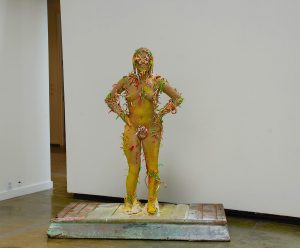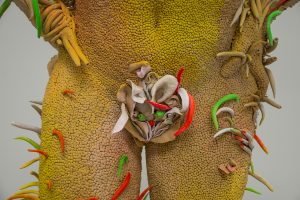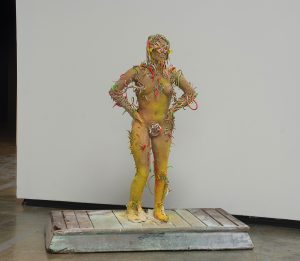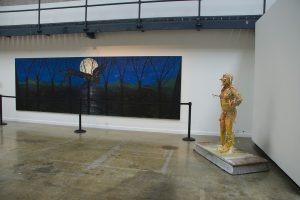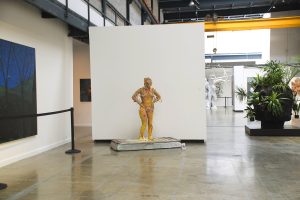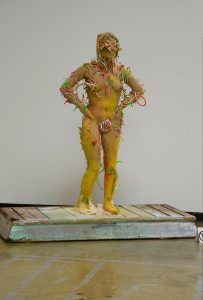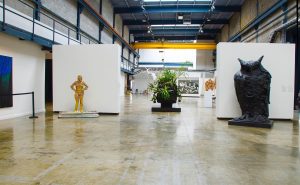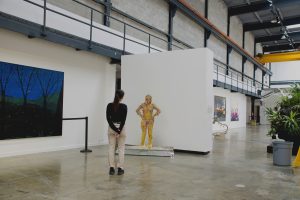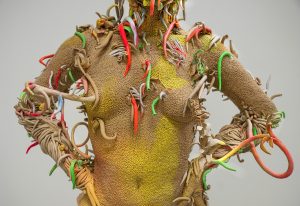What kind of metamorphosis is at play in Kate Yagoshevski work ? Female characters in Kate Yagoshevski’s work depicted here calmly accepts process of becoming unknown of an organic form, becoming floramorphic or a therianthrope, half plant, half human.This apparent calmness and acceptance relates to a choice that the woman made, thus exercising her free will to change her appearance, adding more lips. In some other sculptures of Kate Yagoshevski the model wears disproportionate huge boobs. Contemporary humans choose what identity they want to carry to the world.But there is more.Yellow is the color chosen for this process of becoming who you are.
In that particular case Kate Yagooshevski uses her synesthesia gifts to feel the model she works with. yellow is the color emanating from this model yellow is the color of the emotions she carries throughout this process. Orange is the color of people who are no strangers to good communication with the opposite sex.Every color has meaning.
Then there is what the artist calls “the structure” of the person, which she refers as “psychic materials” that give the artist a “chart” a little bit like a math chart. Then the artist sculpts letting her feelings about the model rise, letting the excrescences grow and express their nature on the body. Kate Yagoshevski is using living material. Artist worked with the model and then she allowed “growing psychic materials “ on her at that time.
The pistils and etamins have grown on the model’s aura. Some “psychic materials “ressemble a sea anemone, an oddball, half plant, half animal. Or is the model becoming a therianthrope ? Is the character able to produce a form of photosynthesis through its own chloroplasts ? Is the model a mandrake ? In medieval times, mandrake, whose roots take the form of a female or male body, was considered as a key ingredient in witchcraft for its mind-altering and hallucinogenic effects.Even though the sculpture looks surrealistic, the interpretation can only be symbolic as we are dealing with psychic aura rendering . But the plasticity of the interpretations opens a door to our understanding of psychology and myths.
Text: Isabelle Kowal
